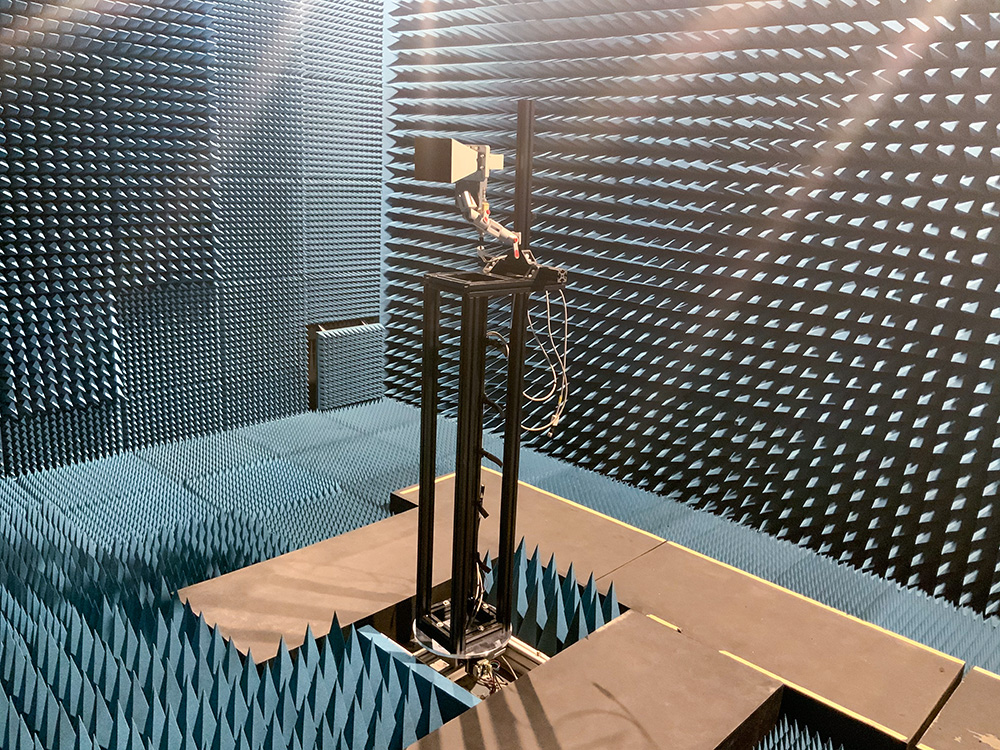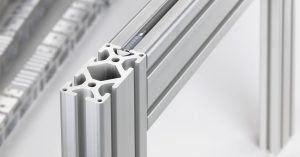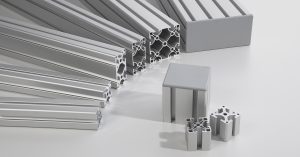Metal-free KH profiles from item used in the measurement of antennae at TU Darmstadt.
The Institute for Microwave Engineering and Photonics at the Technical University of Darmstadt (TU Darmstadt) conducts in-depth research on tunable antenna systems. Its work involves measuring antennae in what is known as an anechoic chamber. “The chamber is a space that kills microwaves similarly to chambers that kill soundwaves,” explains lecturer Dr Holger Maune, who heads the Tunable Microwave Devices group at the Institute. In fact, the inside of the anechoic chamber – clad in countless spikes made of foamed carbon – looks pretty similar to the padded soundproof walls of a recording studio. The spiky shape of this cladding material ensures that electromagnetic waves are absorbed into the walls rather than being reflected back. Maune explains that this creates a “quiet zone” where there is just a single beam – the signal passing from one antenna to another – with no reflections from the walls or floor. That is why nothing made of metal can be used for the antenna measurement technology in the chamber, since metal reflects 1:1. The Institute therefore uses non-metallic KH profiles from item for its measurement technology set-up.
Antenna measurement technology with KH profiles helps deaden microwaves
item developed the KH profile for its MB Building Kit System, as a metal-free alternative to the classic aluminium profile. It is manufactured from a composite material made up of 70 percent wood fibres and 30 percent polypropylene thermoplastic. Both materials can be recycled. KH profiles are made with wood from sustainably managed forests that carries the PEFC label. But that’s not the only reason why the KH profile is a sound ecological choice – it also takes 76 percent less primary energy to manufacture compared to an aluminium profile. Weighing in at 3.6 kg in CO2 equivalents, the KH profile has a better emissions balance sheet, too. Compared to the production of aluminium profiles, it saves 91 percent on CO2 emissions. When it comes to material properties, the KH profile, at 1.6 kg/m, is also lighter than its aluminium counterpart. What’s more, KH profiles are ideal for work involving electromagnetic waves or electrical insulation. Metals cannot be used in such instances, because they are conductive or reflect waves, thereby distorting measurements. All in all, antenna measurement technology is an ideal application scenario for KH profiles.

Non-metallic properties coupled with versatile application options
The special profiles have been used to create a positioning unit with a rotating stand and rotating coupling that ensure the structure can be rotated 360 degrees. The antenna that is to be measured is mounted on a ball and socket joint, which is also supplied by item. A reference antenna is positioned at the side to transmit into the structure and the antenna on the positioning unit is used to measure the output that is received. “You want to avoid a scenario where an antenna is transmitting energy to somewhere you don’t need it,” explains Maune. The measurement process enables the researchers to identify an antenna pattern by using a main lobe that the antenna transmits to and side lobes. Ideally, no radiation should reach the side lobes. It was at the end of 2019 that Maune became aware of KH profiles and realised straight away that they could be useful for antenna measurement technology. “We’ve been using item for a long time for our mechanical structures, such as mounting systems for magnets and measurement structures,” says Maune. “We’ve been working with the aluminium profiles for decades.”
KH profiles can be combined directly with aluminium profiles – everything is modular and compatible.
In actual fact, the KH profiles have turned out to be the ideal solution for antenna measurement technology. “The profiles have met our requirements perfectly because they are non-metallic and don’t conduct electricity, which means they minimise radar cross-section and radar backscatter,” reports Maune. “When it comes to antenna measurement, it’s the only alternative to aluminium – nothing else works.” The KH profile combines a typical item characteristic – exceptional versatility – with non-metallic properties. The components in the structure are also exceptionally versatile: “The antenna must always be aligned centrally over its axis of rotation – and you can easily achieve that,” he says. Another advantage is that the special profiles are modular and can be easily combined with aluminium profiles and other item components. Maune is particularly impressed by the stability of the KH profiles. “When I took delivery of the six-metre long profiles, I was wowed by how stable they are,” he recounts, before concluding: “We are really happy with the KH profiles from item.”
Do you want to keep up to date on the various ways that item products are being put to use? Then we have just what you’re looking for! Simply subscribe to the item blog by completing the box at the top right.





